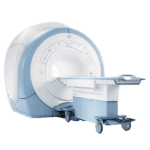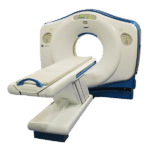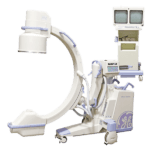Color imaging is incredibly appealing when you think that black and white can lead to unwanted misinterpretations
When you see a black and white image, the level of clarity doesn’t take away from the fact that color just makes things more exciting. Now, according to an article published in sciencedaily.com “A collaboration between researchers at the U.S. Department of Energy’s Lawrence Berkeley National Laboratory (Berkeley Lab) and the University of Wisconsin-Milwaukee (UWM) has combined Fourier Transform Infrared (FTIR) spectroscopy with computed tomography (CT-scans) to create a non-destructive 3D imaging technique that provides molecular-level chemical information of unprecedented detail on biological and other specimens with no need to stain or alter the specimen.”
The idea of a color image is incredibly appealing when you think about the fact that black and white can really lead to unwanted misinterpretations of what the actual image may look like. It’s something of an expectation when you think about all the things that are happening in terms of developments. Far better 3d and 4d technology along with hybrid modalities that mix MRI and CT properties are either being designed or getting clearance from the FDA to go commercial. It was stated by one of the researchers that “The notion of having the colors in a 3D reconstructed image being tied to real chemistry is powerful.”
It is incredibly powerful to see this development, but not just from a chemistry perspective. The implications here are that there is more detail when considering the complexity of certain conditions. To be able to see something closely and better understand what causes it, why, and how to treat it, has enormous implications on the research front.
Get Started
Request Pricing Today!
We’re here to help! Simply fill out the form to tell us a bit about your project. We’ll contact you to set up a conversation so we can discuss how we can best meet your needs. Thank you for considering us!
Great support & services
Save time and energy
Peace of mind
Risk reduction
It was stated in the article that “Every individual type of molecule absorbs infrared (IR) light at specific wavelengths that are as characteristic as a human fingerprint. IR spectroscopy can be used to identify the chemical constituents of a sample and the application of the Fourier-transform algorithm allows all IR fingerprints to be simultaneously recorded.” The implication is simplicity and ease when dealing with images.
This development will continue to open the market for medical technologies over the next five years. There will be a greater premium placed on a modality that can provide so much detail. It will be interested to see what the future holds in this particular arena.
If you have any questions about diagnostic imaging modalities, please, feel free to give us a call. We here at Amber look forward to answering any questions that you may have.
Bobby Serros
President/CEO
407.438.7847
BobbyS@AmberUSA.com
References: http://www.sciencedaily.com/releases/2013/08/130805133709.htm



